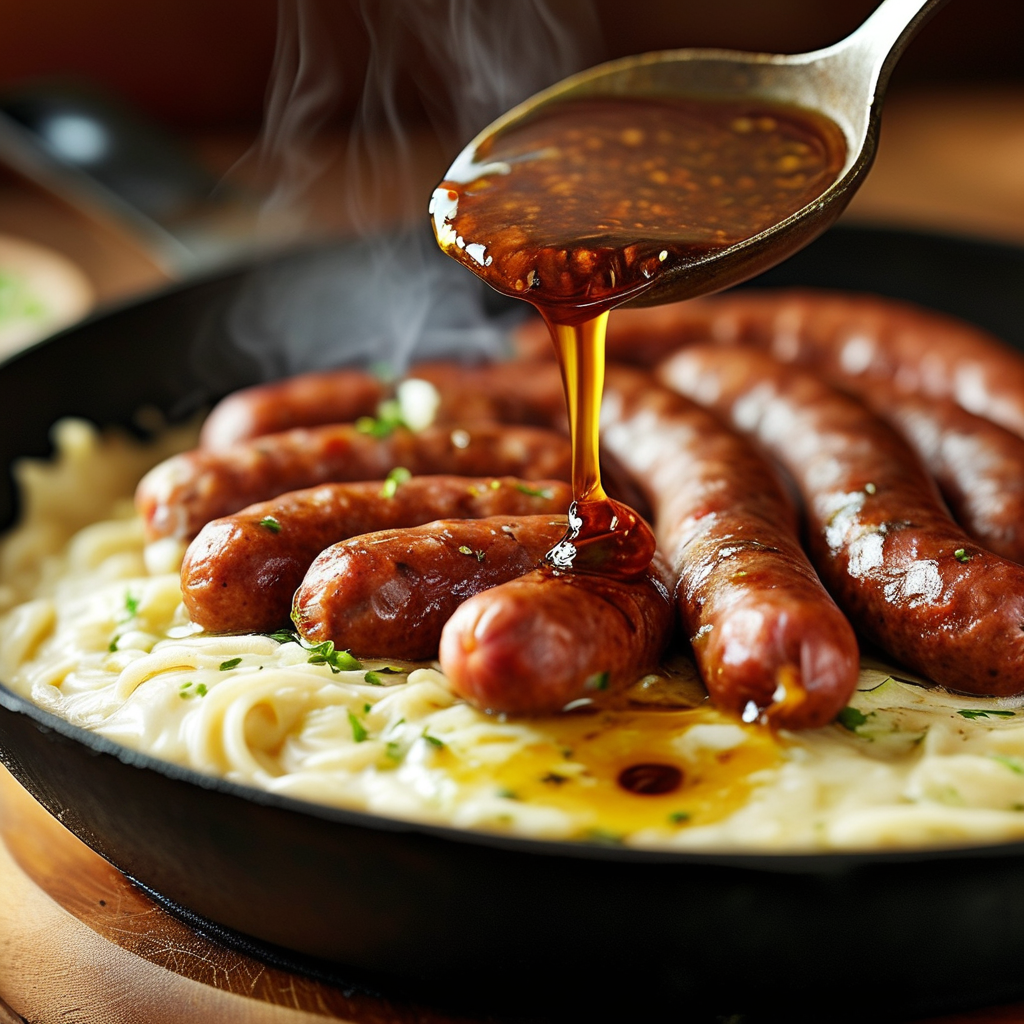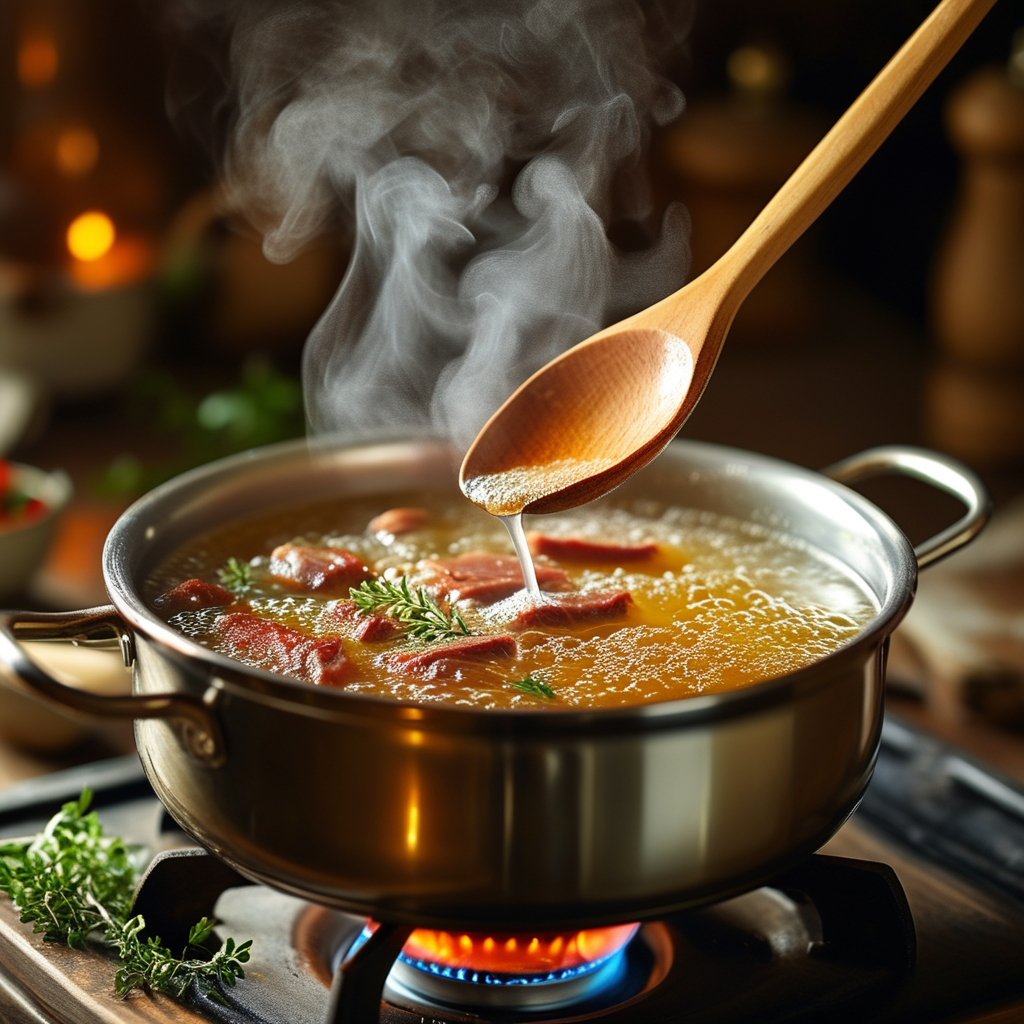Gravy is a beloved staple in Southern cuisine, serving as the rich and flavorful sauce that elevates many dishes. Among the various types of gravy, Sawmill Gravy vs Country Gravy stand out, each offering distinct flavors and ingredients. Understanding the differences between these two gravies not only enhances your meal but also enriches your culinary knowledge. In this article, we’ll delve into the origins, preparation methods, and cultural significance of both gravies.
To kick off, let’s explore what sawmill gravy is all about. You can also check out this informative recipe for Classic Southern Biscuits that pairs beautifully with both gravies. For a delightful brunch idea, see our Ultimate Guide to Family Brunch.
Before we dive deeper, it’s worth noting that both gravies complement numerous dishes, each adding a unique touch to Southern meals. Learn more about comforting soups such as Sensational Chicken Noodle Soup that can also serve as a great accompaniment to your gravies. For ideas on pairing gravies, check out Breakfast Pizza: A Comprehensive Guide.
What is Sawmill Gravy?
Sawmill gravy is a creamy gravy often made from the drippings of meat, typically sausage. The combination of flour, milk, and drippings creates a rich, hearty sauce that is a hallmark of Southern breakfasts. Traditionally, sawmill gravy is prepared by:
- Cooking the meat to render its fat.
- Adding flour to create a roux.
- Incorporating milk for creaminess.
This gravy has regional variations, but its roots are deeply entrenched in Southern history, often linked to the lumber industry and early settlers who depended on quick, nourishing meals.

What is Country Gravy?
Country gravy refers to a more general category of gravy made from a range of ingredients, including sausage, milk, and sometimes mushrooms. It is characterized by its thicker consistency and robust flavors. Preparation methods can vary, but a typical country gravy recipe might include:
- Cooking sausage or other meats to create drippings.
- Whisking in flour while cooking.
- Gradually adding milk to attain desired thickness.
Country gravy plays a significant role in Southern comfort food, often served over biscuits or alongside fried chicken, showcasing its versatility. To learn more about Southern meals, explore our Soul Food Recipes.

Key Differences Between Sawmill Gravy vs Country Gravy
Understanding the differences involves examining several factors:
- Ingredient Comparison: Sawmill gravy relies heavily on sausage drippings, while country gravy can include a variety of meats.
- Texture and Consistency: Sawmill gravy tends to be creamier, whereas country gravy can be thicker with a more textured appearance.
- Flavor Profile: Sawmill gravy is usually richer and can be spicier; country gravy is more balanced and offers a wide range of herbs and spices.
- Cultural Significance: Both gravies reflect the importance of hearty meals in Southern dining culture, signifying comfort and warmth.
How to Make Sawmill and Country Gravy at Home
Cooking both gravies at home is a rewarding experience. Here are simplified recipes for each:
Sawmill Gravy Recipe
Ingredients:
- 1/2 cup sausage drippings
- 1/2 cup flour
- 2 cups milk
- Salt and pepper to taste
Instructions:
- Heat the sausage drippings in a skillet over medium heat.
- Whisk in the flour until fully combined, cooking for a minute.
- Slowly add milk, whisking constantly until thickened.
- Season with salt and pepper before serving.
Country Gravy Recipe
Ingredients:
- 1/2 pound sausage (or your choice of meat)
- 1/4 cup flour
- 2 cups milk
- Salt and pepper to taste
Instructions:
- Cook the sausage until browned, then remove from skillet.
- Add flour to the drippings and whisk together.
- Gradually add milk, stirring until thickened.
- Return sausage to the skillet, mix well, and adjust seasoning.

Common Dishes Served with Sawmill and Country Gravy
Both gravies pair wonderfully with a variety of Southern dishes:
- Biscuits and gravy
- Fried chicken
- Mashed potatoes
- Country-style steak
- Chicken-fried steak
The cultural significance of these dishes in Southern cuisine demonstrates the comfort and hearty nature of meals typical to the region.

Nutritional Perspective
Analyzing the nutritional content of these gravies reveals some differences:
- Caloric Content Comparison: Sawmill gravy may have higher calorie content due to sausage fat.
- Nutritional Benefits: Both gravies can offer protein but should be consumed in moderation.
- Health Considerations: Be mindful of saturated fats if you’re watching your diet.
- Potential Dietary Restrictions: Gluten-free options are available by substituting regular flour.
FAQs: Sawmill Gravy vs Country Gravy
Here are answers to common questions regarding these gravies:
- What are the primary differences in taste? Sawmill gravy is richer and often spicier than country gravy.
- Can you substitute one for the other? Yes, but the flavors will differ significantly.
- What’s the best way to store leftover gravy? Refrigerate in airtight containers for up to three days.
- Why is it called sawmill gravy? The name is derived from its origins in lumber camps, where it was a staple.
- How can you make gravy without meat drippings? Use vegetable oil or butter as a base, along with spices and broth.
Key Takeaways
- Sawmill gravy is defined by sausage drippings and a rich, creamy texture.
- Country gravy contrasts with a broader range of ingredients and flavors.
- Both gravies are staples in Southern cuisine and can enhance various dishes.
- Sawmill Gravy vs Country Gravy provides a clear comparison for better culinary choices.

Conclusion
In summary, both Sawmill Gravy and Country Gravy play significant roles in Southern comfort food, each boasting unique flavors, ingredients, and cultural ties. We encourage you to experiment with both gravies in your cooking, perhaps trying them over pancakes, fried chicken, or cheesy grits for a delightful treat. Enjoy the warmth and comfort that these gravies bring to your dining table!
For more recipes featuring gravies, visit our guide on What is Sawmill Gravy Made Of or learn about The Difference Between Sawmill Gravy and Regular Gravy.